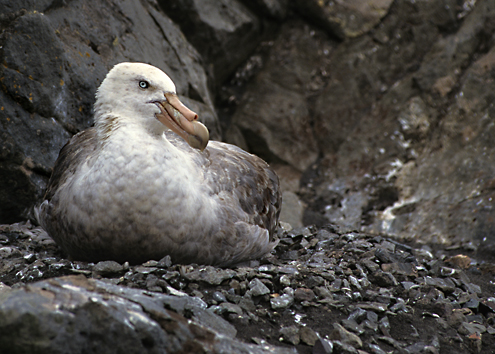The giant petrel is the largest flying bird in Antarctica. Like the skua, it is a predator. These increasingly rare birds lay eggs in October and the eggs hatch in January. There is actually a rather large baby chick directly behind this bird in the background. I got one other shot of the mother and baby from another angle, but had to be careful not to stay too long or get too close. I used my 80-200 lens for this shot, so I was quite a distance away (and face down on the ground to get the eye level shot!). There were two adults and two chicks with them at Hannah Point, where this photo was taken. According to Guillaume Dargaud on his Antarctic Birds site, “the giant petrel is the largest of the 95 species of petrel and also the longest living one. A bird tagged in 1952 is still alive.” I also learned that the giant petrel is commonly known as a “stinker” because of its habit of vomiting on any one or thing that approaches them and appears to impose a threat. (Thank goodness for long lenses!)
© Cindy Dyer. All rights reserved.


GIVE ‘EM SOMETHING TO TALK ABOUT